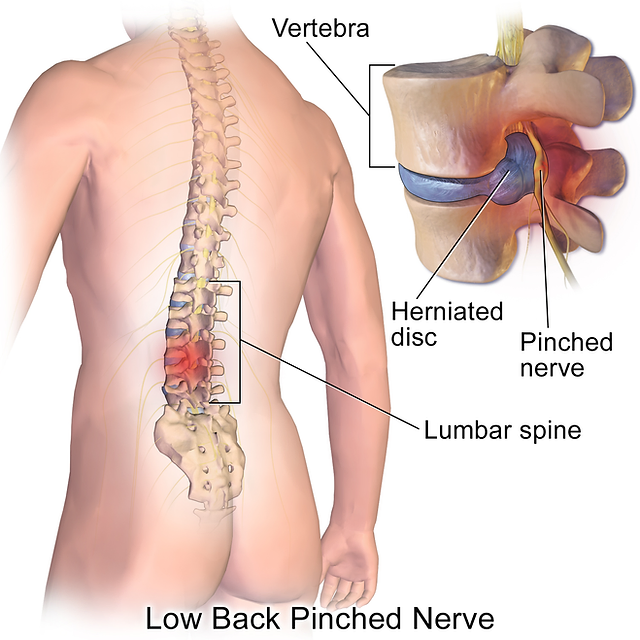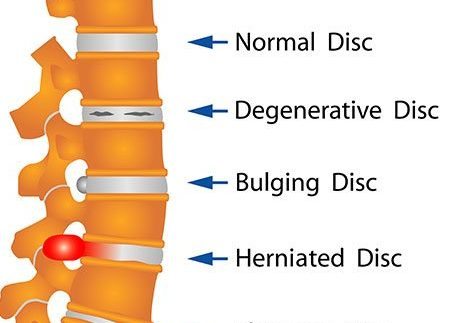There’s only a handful of people who don’t have back pain at least once in their lives. It’s mild for some, but it’s a nightmare for others that ruins their quality of life . The most common cause of pain in the back is disc disorders. The discs are responsible for keeping the spine stable and flexible. If the tension on the spine continues for an extended period of time, muscles and discs begin to become weak which in turn increases the risk of a bulge or protrusion.
Here we are sharing an inspiring story of a young girl who faced a severe disc problem that made her life and career challenging and successfully overcame it through her strong determination, lifestyle changes and medical intervention at the proper time under the guidance of expert physicians.
A 29 year old woman, employed as a software engineer, came to the outpatient Department of SSANH with high expectations. She was suffering from severe stiffness in the lower back region which was associated with severe pain in the left leg. She would sit down after walking a short distance and found difficulty in sitting and lying flat because of the pain. She also complained about the numbness and weakness of the left leg. The physical examination revealed tenderness over the lumbar vertebrae, a positive straight leg raising test(painful at 20°) and restricted movements of the lumbar joint. She took an MRI Scan of her back and hip as per the advice of her consulting physician Dr Sanand which revealed a diffuse disc bulge in the lumbar vertebrae. The healthcare team created a personalized treatment plan to address her disc problem. She was admitted to the hospital for 21 days. The pain, numbness and weakness gradually subsided, could revert back to normal health and perform her daily activities perfectly. Since then she has been doing regular exercises, proper rest and maintaining a healthy lifestyle to avoid the recurrence of the condition. This case exemplifies the profound impact that natural healing methods can have on our lives, providing hope and inspiration for those seeking alternative paths to health and well-being.
Treatment Implemented
Internal medicines:
- Punarnavasavam
- Abhayarishtam
- Balarishtam
- Gulmantaka kashayam
- Sahacharadi kashayam
- Hinguvachadi choornam
- Tribhuvana keerthi rasa
- Sahacharadi thailam
- Sukumara ghrita
Panchakarma procedure:
- Choorna Kizhi
- Agni karma
- Yogavasti
- Lepana
Yoga and Meditation:
Yoga and meditation-like practices help to improve mobility, relaxes muscles and can reduce stress.
Dietary Modifications:
The hospital provided a personalized diet plan. An anti-inflammatory and nutritious diet chart was implemented for this particular patient.
Improvement
| Sl no | Symptoms | Before treatment | After treatment |
|---|---|---|---|
| 1 | Stiffness in the lower back | Severe | Nil |
| 2 | Pain while walking | Severe | Nil |
| 3 | Difficulty in sitting | Present | Nil |
| 4 | Numbness in leg | Present | Nil |
| 5 | Weakness in leg | Present | Nil |
| 6 | SLR test | Positive (<20°) | Negative (70°) |
Investigation reports
MRI Report-LumboSacral Spine
- Lumbosacral transitional vertebra with sacralization of L5
- Spondylotic changes in lumbar spine with multilevel disc bulge in L2/L3 -L4/L5 levels with posterior annular tear in L2/L3 level.
- Diffuse disc bulge with posterior annular tear in L3/L4 level causing compression of the bilateral traversing nerve roots(left>right).
- Diffuse disc bulge,central and left paracentral disc protrusion in L4/L5 level causing spinal canal narrowing with compression of the bilateral traversing nerve roots (left>right).
MRI Report-Hip joint
Subtle STIR Hyperintensity at the greater trochanter on left,involving the gluteus medius and minimus tendons- mild tendinitis /bursitis.
What is Disc Herniation?
Disc herniation is also called disc bulging, disc protruding or ruptured disc.The disc is a cushion-like structure situated between two vertebrae. Bulging of the disc from its own place results in irritating the nerves passing nearby causing tingling or a varied range of pain.

What are the symptoms of IVDP?
- Back Pain which may radiate to legs
- Numbness or tingling sensation
- Weakness in the legs
- Loss of bladder or bowel control
What are the goals of SSANH in managing IVDP?
- To reduce the inflammation
- Reduces nerve root compression
- Relaxes and strengthen the muscles
- To relieve weakness, stiffness and numbness associated with it
- Provide maximum mobility and flexibility to the affected area
- Prevent the recurrence by advising lifestyle modification techniques.
By attaining the above goals one can achieve a healthy and quality life.



